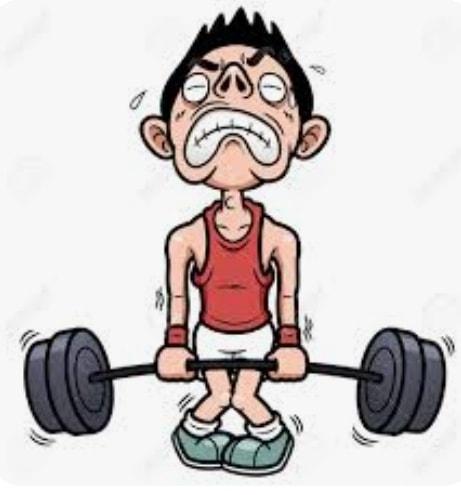Are you training for dysfunction?
If I took you to the gym and told you to lift 100kg you'd probably tell me you couldn't. If I stood behind you with a whip, shouting at you or prodding you in the ribs you'd probably try to lift it, even though you know you can't and as a result use the wrong muscles, compensate and probably end up injuring yourself. If you continued to do this before your body was ready you would strengthen the wrong muscles, cause imbalance in your body and damage joints, ligaments and tendons in the process.
If i took you and asked you to just lift the bar, assessed your posture and form and slowly, over the weeks built up your reps and weight and kept assessing your posture, you would eventually lift that 100kg without a problem and without causing injury in the process.
Your horse is no different.
We should not be pushing horses beyond what their bodies are capable of. I think people look at horses and see a big animal and automatically assume they are strong, I often remind people that horses were never designed to be ridden so it is our responsibility as a rider/ owner to strengthen our horses for this. This requires us to strengthen muscles that would not ordinarily strengthen just mooching around a field.
Every horse is different, just like us humans. They will require strengthening in different areas, so a one size fits all doesn't work. Add in to that mix previous injuries and every exercise plan should be carefully tailored to that horse's needs on that day.
For example - pole work is generally considered a good exercise for building core strength, this is only true if your horse is actually using its core to get over the poles. If your horse trots through a line of poles with its head in the air, its shoulders sunk, it's back hollow and its pelvis out behind itself... Hammering it over lines of poles is just going to strengthen those muscles we are trying to switch off and put the joints, ligaments and tendons at risk of being damaged. Add in to this an unbalanced rider and these stressors increase.
Of course, the first time we ask a horse to do anything they may fumble a couple of times before they find the right way. But if they don't improve each time and instead get tighter in their frame we must stop and reassess the exercise.
Instead, we may have to first teach the horse how to use its body correctly, this may be at the standstill and then in walk without any poles, I know! How boring i hear you cry!!
Only then, when the horse can carry itself comfortably, do we start with one pole (just like the single bar at the gym), get the form right and once we can do that correctly we may introduce another pole or go up a gait.
This applies to everything we do with the horse. Ask for one thing, get it right (by right i mean using the right muscles) and then gradually ask for more as they build strength, only then can you advance the exercise.
If the horse has had time off or an injury you may need to start from scratch. Just because they trotted 6 poles 6 weeks ago, doesn't mean they can now.
Work with the horse you have on the day, they may have slipped in the field, worked hard the previous day. If their form fails or they're struggling - either stop the exercise or simplify it- DO NOT push on through if they're not doing it correctly - you will train the wrong muscles, you will train dysfunction. Just because they could do it yesterday does not mean they can today.
So please consider this with everything you do with your horse, watch them, listen to them, assess them and they will work so much better for you as a result.
Written by Kirsty Rawden Veterinary Physiotherapy - please credit if you copy/ share
